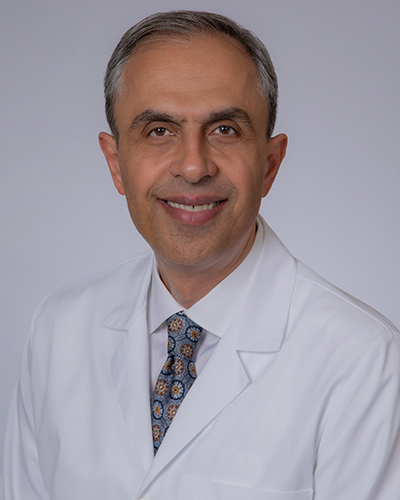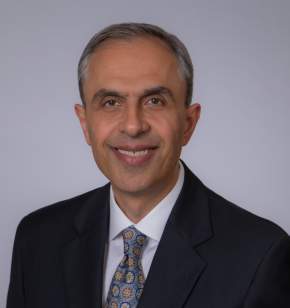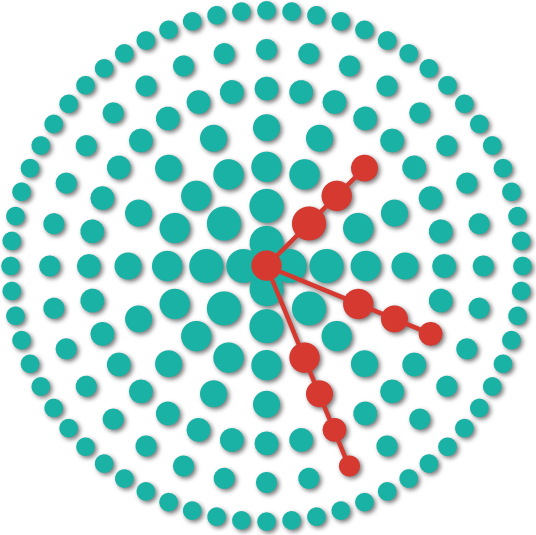Glioblastoma End of Life Stages: Frequently Asked Questions for Patients and Caregivers

- How Is Glioblastoma Diagnosed?
- How Long Can You Have Glioblastoma Before Symptoms Appear?
- Glioblastoma Grading
- How Can You Tell When Glioblastoma End of Life Stages is Near?
- What Are the Final Stages of a Brain Tumor?
- What Can Be Done to Make Death From Glioblastoma Less Painful for Both Patient and Caregiver Alike?
- Get Insights From a World-Renowned Neurosurgeon

It is difficult for anyone to imagine themselves in the shoes of someone with a terminal diagnosis. But it can be even harder for people who have been diagnosed with brain cancer.
Glioblastoma, historically called glioblastoma multiforme, is one of the most aggressive types of brain tumors. Patients are often given very poor prognoses and consider proper glioblastoma end-of-life care to manage their conditions in their final stages.
Patients with glioblastoma will likely experience many different symptoms and emotions as they near the end of life from glioblastoma end of life stages. However, there are ways to make the process much less painful.
This article will explore commonly asked questions by patients and caregivers about what to expect in the final stages of glioblastoma and similar terminal conditions.
How Is Glioblastoma Diagnosed?
Glioblastoma (previously called glioblastoma multiforme) is diagnosed through a combination of neurologic and imaging tests, along with a tissue biopsy.
- Neurologic Exam: This is a series of tests conducted by a healthcare professional to assess the nervous system. It can involve checking your vision, hearing, walking, sensation, and coordination, among other functions.
- Imaging Tests: A magnetic resonance imaging (MRI) test provides detailed pictures of the brain and can determine the size and location of the tumor.
- Tissue Biopsy: A small sample of tumor tissue is obtained via a surgical biopsy, then delivered to another physician (pathologist) for additional testing and viewing under a microscope.
A biopsy confirms a diagnosis, and can provide more information on the exact type of tumor and its prognosis to guide treatment decision making.
How Long Can You Have Glioblastoma Before Symptoms Appear?
The time from the initial development of glioblastoma to the appearance of symptoms can vary significantly and is often difficult to determine precisely.
Glioblastoma is known for its rapid growth and aggressive nature. Symptoms typically develop over a short period, often weeks to months, as the tumor grows and starts to affect brain function.
The onset of symptoms is usually related to the location of the tumor within the brain and its impact on surrounding structures. As the tumor expands, it can cause increased pressure within the skull, leading to headaches, nausea, and vomiting.
Depending on the exact location, patients may experience neurological deficits such as weakness, speech difficulties, vision changes, or seizures, which are often the presenting symptom.
Due to the rapid progression of glioblastoma, symptoms can escalate quickly, prompting medical evaluation and subsequent imaging studies like MRI, which typically reveal the tumor.
It is important to note that the absence of symptoms does not necessarily mean the absence of disease, as small or strategically located glioblastomas may not produce symptoms until they reach a size that disrupts brain function.
Why should you have your surgery with Dr. Cohen?
Dr. Cohen
- 7,500+ specialized surgeries performed by your chosen surgeon
- More personalized care
- Extensive experience = higher success rate and quicker recovery times
Major Health Centers
- No control over choosing the surgeon caring for you
- One-size-fits-all care
- Less specialization
For more reasons, please click here.
Glioblastoma Grading
Glioblastoma is classified as a Grade 4 astrocytoma by the World Health Organization (WHO) classification system for tumors of the central nervous system.
This grading system is based on microscopic features of the tumor and is used to predict the tumor’s biological behavior, including its growth rate, likelihood of infiltration to surrounding brain tissue, and prognosis.
The WHO grading system ranges from Grade 1 to 4, with Grade 1 being the least aggressive and Grade 4 being the most aggressive and malignant. Glioblastoma is the most malignant form of astrocytic tumors and is characterized by several microscopic features:
- Cellular Atypia: This refers to the abnormal appearance of tumor cells when viewed under a microscope. Glioblastoma cells display significant variations in cell size and shape, indicating their malignant nature.
- Mitotic Activity: Glioblastoma have a high number of mitotic figures, which are cells that are actively dividing. This high mitotic index is indicative of rapid proliferation of tumor cells.
- Microvascular Proliferation: Glioblastoma shows the formation of new, abnormal blood vessels within the tumor. These vessels are often fragile and can lead to hemorrhage within the tumor.
- Necrosis: A hallmark of glioblastoma is the presence of necrotic (dead) tissue, often surrounded by “pseudopalisading cells” – tumor cells that arrange themselves in a lining around areas of necrosis.
The presence of these features are characteristic of glioblastoma and assist in confirming the diagnosis.
How Can You Tell When Glioblastoma End of Life Stages is Near?
In most cases, the process leading to death is not sudden for patients with glioblastoma. Growth of the tumor and swelling can disturb areas of the brain, manifesting as several clinical symptoms such as weakness, a decrease in consciousness, difficulty swallowing, seizures, and headache.
Not all patients experience the same signs and symptoms, so doctors provide a more general overview of surviving glioblastoma.However, there are some common indications that glioblastoma end of life stages may be near.
The following are some commonly reported end-of-life glioblastoma symptoms:
Persistent Changes in Vital Signs: Changes in blood pressure, heartbeat, and breathing may or may not be noticeable to family and caregivers. These changes may occur over a period of several days to even several weeks.
Behavioral Changes: Patients may become confused and disoriented. They become sensitive to loud sounds. They may even start using language that is not characteristic of them or expressing thoughts that are also strikingly out-of-character.
Less Sociable and Less Frequent Communication: The patient may become less social, more withdrawn, or more irritable. They may need help understanding others or communicating, often feeling tired or giving brief answers. They are likely to feel stressed or irritated when large groups of visitors surround them. However, they may panic if they find they are alone or if their primary caregiver is not present in the room.
Increased Sleeping: Patients feel increasingly tired within the early stages of their end-of-life care. They may feel exhausted after performing basic activities and will quickly fall in and out of sleep. Toward the later stages, they may sleep over 20 hours daily and have sporadic periods of alertness. In the final stages, they are almost always asleep to the point that it is difficult to wake them. Though they are sensitive to loud noises while awake, they can sleep even in a noisy environment.
Decrease In Activity Level: Fatigue is often a major issue for those who are nearing the glioblastoma end of life stages. This is due to a combination of factors, including the cancer itself, the medications that are often prescribed to treat various symptoms associated with the dying process, and the psychological stress of coping with the matter at hand. Towards the later stages, patients may be completely bedridden and will require assistance for basic physical tasks.
Decline In the Ability to Respond to One’s Environment: Patients may seem disassociated or distracted. Over time, they may lose their ability to speak and move on their own, requiring constant supervision and caregiving.
Urinary and Bowel Symptoms: Patients may experience urinary or bowel incontinence. Because of physical weakness and fatigue, they will require assistance going to the bathroom or, if bedridden, use a bedpan or urinal. Their urine may appear darker toward the later glioblastoma end-of-life stages. In some cases, patients may feel the urge to urinate but do not produce urine.
What Are the Final Stages of a Brain Tumor?
As patients near the glioblastoma end of life stages, patients may lose the ability to speak, eat, and move. They may also suffer from seizures, hallucinations, or changes in breathing pattern.
The skin may take on a bluish tint, and the patient may become increasingly lethargic. While these signs and symptoms do not provide a precise timeline, recognizing one or more of them may signal to families and caregivers that the end is near.
What Can Be Done to Make Death From Glioblastoma Less Painful for Both Patient and Caregiver Alike?
Death is often a difficult process for patients with glioblastoma and their caregivers. However, there are ways to lighten the emotional and physical burden of a loved one’s passing for both parties. One of the most important things caregivers can do is remain understanding and supportive.
Patients with glioblastoma are often struggling with a great deal of physical and emotional burdens. It is important to listen to them, even if they are unable to communicate verbally.
To ease pain and discomfort, caregivers may provide the patient with pain medication according to the instructions of their healthcare team. They can also help keep their environment home-like and peaceful.
Many patients find comfort in the presence of their loved ones, so, if possible, caregivers should consider arranging visits from friends and family members. Home hospice care can be an effective strategy.
Caregivers should be prepared for death to occur at any time. It is important to have a plan in place for when death does occur, including who will be present and what will be done afterward.
During this process, the patient’s loved ones can help them feel as comfortable as possible.
It is important that family and friends do not feel afraid of death, and instead, be prepared for it. They should also try to spend as much time with the patient as they can in their final days.
Death from glioblastoma can often come suddenly and unexpectedly. In some cases, death may be preceded by a few hours or days in which the patient has noticeable signs and symptoms.
Though death itself comes quickly, it’s important to understand that death from glioblastoma often results from a gradual process of physical decline. Empathy and compassion during this time can help make death less painful for patients and their loved ones alike.
Death is usually a taboo subject, but patients who have been diagnosed with glioblastoma need to find the courage to consider the reality of their end-life stage. While there is no easy way to deal with passing, there are things that can be done to make the process easier for both the patient and caregiver.
For many patients, their faith can be crucial for getting through such difficult times. For others, coping strategies such as talking about their feelings and getting guidance from loved ones, clergy and spiritual support groups can help move them toward acceptance and emotional healing.
Taking care of a dying loved one is often emotionally challenging, as well. Caregivers may feel complicated and conflicting feelings about the impending loss.
It is important for caregivers to be kind to themselves, spend time with other loved ones and seek help from professionals, such as a licensed therapist, if they need additional support.
No one wants to think about death, but for patients who have been diagnosed with glioblastoma, it is a reality that they must face. This type of cancer is very aggressive and often leads to death within a year or less from the time of diagnosis.
While there is no easy way to deal with death, there are things that can be done to make the process easier for both patient and caregiver. Faith in G-d and family can be crucial for surviving such difficult times and for all involved.
Get Insights From a World-Renowned Neurosurgeon
Dr. Aaron Cohen-Gadol understands that being given a glioblastoma diagnosis can be devastating for patients as well as their loved ones. It is natural to want to learn more about your condition and explore as many treatment options as possible to ensure the best possible care.
Dr. Cohen-Gadol has made neurosurgery his life’s work. He is widely considered as among the most prominent neurosurgeons in the world, having earned prestigious awards such as the Vilhelm Magnus Medal, the highest honor in neurosurgery.
Along with his team, Dr. Cohen-Gadol offers second opinions to individuals diagnosed with glioblastoma.
A second opinion from a medical professional with documented experience and extensive knowledge in this condition can give patients and their loved ones peace of mind as well as open other avenues of treatment.
Request a second opinion from Dr. Cohen-Gadol by filling out the online form.
Resources
- National Cancer Institute
- National Brain Tumor Society
- American Brain Tumor Association











